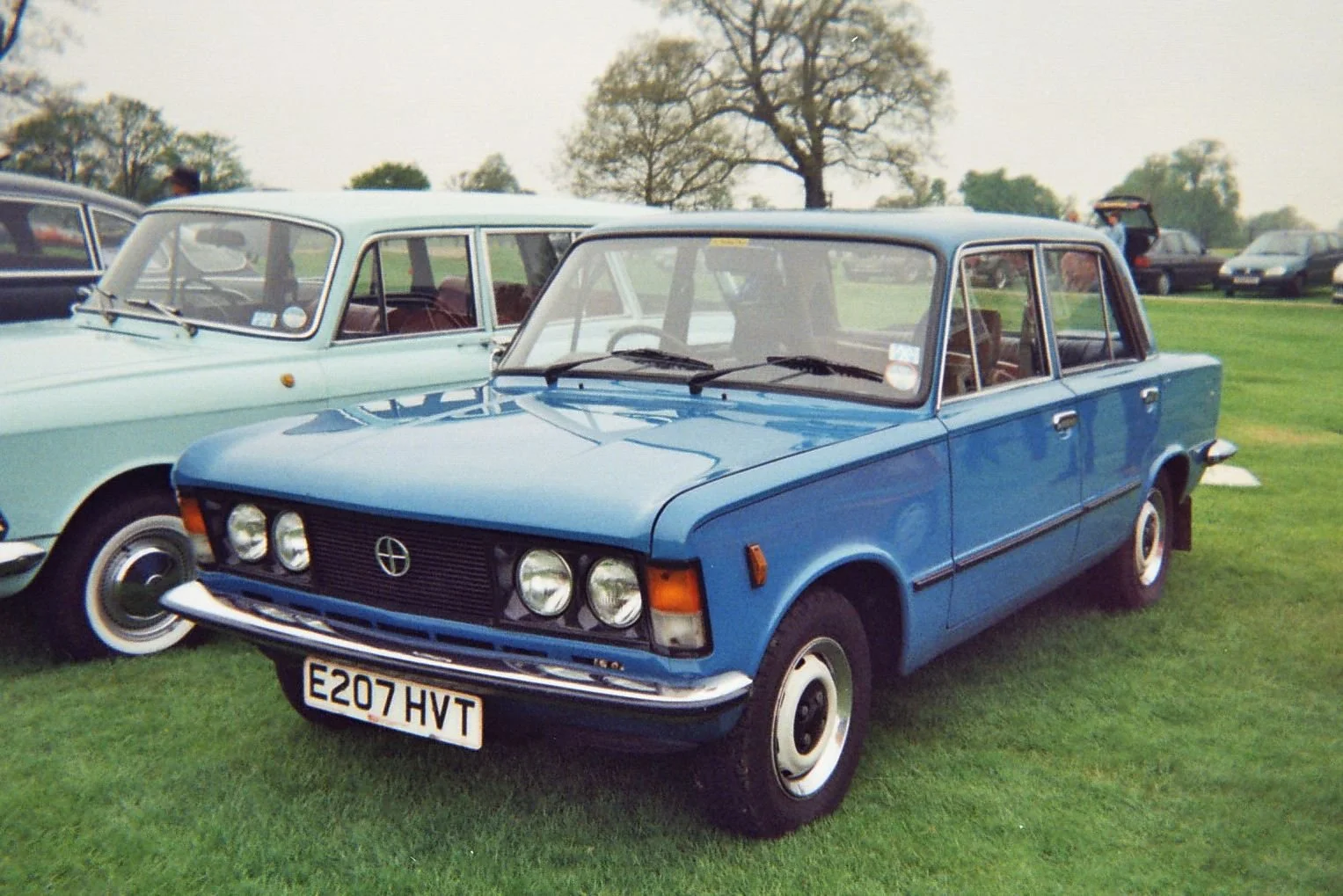‘If only they could talk.’ Polish cars of the Soviet era
The ground floor of the former Warsaw Communist Party Headquarters is now a Ferrari dealer, yet the Polish cars of the Soviet era still putter about its streets as though nothing’s changed. Patryk Mikiciuk from Warsaw’s Motoring Museum divulges a few of their secrets.
What cars were typical on the streets of post-war Warsaw?
The first post-war car was the Syrena, which emerged in the 1950s. They weren’t intended to be personal cars, they were driven by ministers and high level officials. What did common people need cars for, after all?
The Syrena – Poland’s first Soviet automobile
In the 1960s the thinking changed, and the Soviets turned their efforts to producing a ‘people’s car’ that everyone could aspire to. Almost every Soviet block country had its own – the East German Tabant, the Romanian Dacia, the Ladas and Volgas of the USSR. They were all small, economical, sturdy – and most importantly for the people that owned them, easy to fix.
Polski Fiat 125p – ‘the cupboard’
The quintessential Polish car of the times was the Polski Fiat. The 125p [p is for Polski – what else!] was the slightly larger version, nicknamed Kredens (‘the cupboard’). But the one that holds a special place in Poland’s heart is the Maluch – literally ‘little one’, the 126p. The Polski Fiat motorised Poland. It was all-purpose – a van, lorry, utility. It worked on building sites during the day and took Polish families on vacation in summer. And it had a radio/cassette player – everyone’s dream!
The ‘Maluch’ – the little one, Polski 126p
Were they hard to get?
They weren’t cheap. A car represented 3,000-5,000 hours of work. But the main problem in obtaining them wasn’t cost – there simply weren’t any available. You could wait 10 years for one. This meant used cars were more expensive than new ones. You could get a new Polski Fiat, drive it around for five years, and then sell it for three times what you’d bought it for to someone who had money and didn’t want to wait.
It also meant you might not live long enough to get a second one! So people really looked after them. [Former Prime Minister and current European Parliament President] Jerzy Buzek drove his Romanian 1975 Dacia 1300 for 23 years [he donated it to the Museum in 2001]. These were more than just cars. They were your heart. Today we smile at these cars and tell the kids, that’s what it was like then. Because they’d never believe it.
How many Polish people had private cars in the 1970s?
I don’t know, but there weren’t any traffic jams!
How did the Motoring Museum come about?
In the 1970s, even the simplest thing was a problem. Patrols would go from house to house, slapping a fine – for ‘littering’ – on anyone with an old car in their yard. Scrapping them required equipment and time that people didn’t have – imagine trying to break a car up for scrap with just a handsaw! So people were rather desperate to get rid of them. My parents started collecting them at that time, hiding them in the fields and sheds of friends and neighbours. After 1989 they could finally come out of the closet.
Where did the rest of your collection come from?
Everywhere – some had even been bricked into walls or buried in backyards! You have to remember the times. First there was the war, when soldiers requisitioned people’s cars. Then the Germans came and took people’s cars. Then the Russians came and took people’s cars. People were a bit sick of having their cars taken by then so some decided to bury them in their gardens.
I’d need days to tell you the story of every car, but here’s one. In the 1930s, a German officer came to town in a BMW 328 owned by the Abwehr [Nazi secret service]. While it was parked in the Old Town, some Polish resistance fighters stole it – more for the documents and weapons in it than the car itself. The soldier panicked at the prospect of having to tell his superiors. So he made a deal with the soldiers, who arranged to give it back – in exchange for a few dozen Polish resistance fighters the Germans were holding prisoner. So that car saved those people’s lives. Later the officer came back to Warsaw again in the same car – and the Underground soldiers stole it again. That’s just one of our cars and you could write a book just on that.
This is what’s so wonderful and so valuable about these cars. They’re not just engines and parts. Each of them has a story to tell – stories of Polish history and the people who made it. We could go and collect examples of various cars from different countries. But they wouldn’t have the magic of these cars and their stories.
Warsaw’s Motoring Museum is located at Otrebusy, about 30 minutes from Warsaw. Open weekdays 8.30-16.30, 9-17 Sat, 10-17 Sun and holidays , Entry: zl. 14/10.



